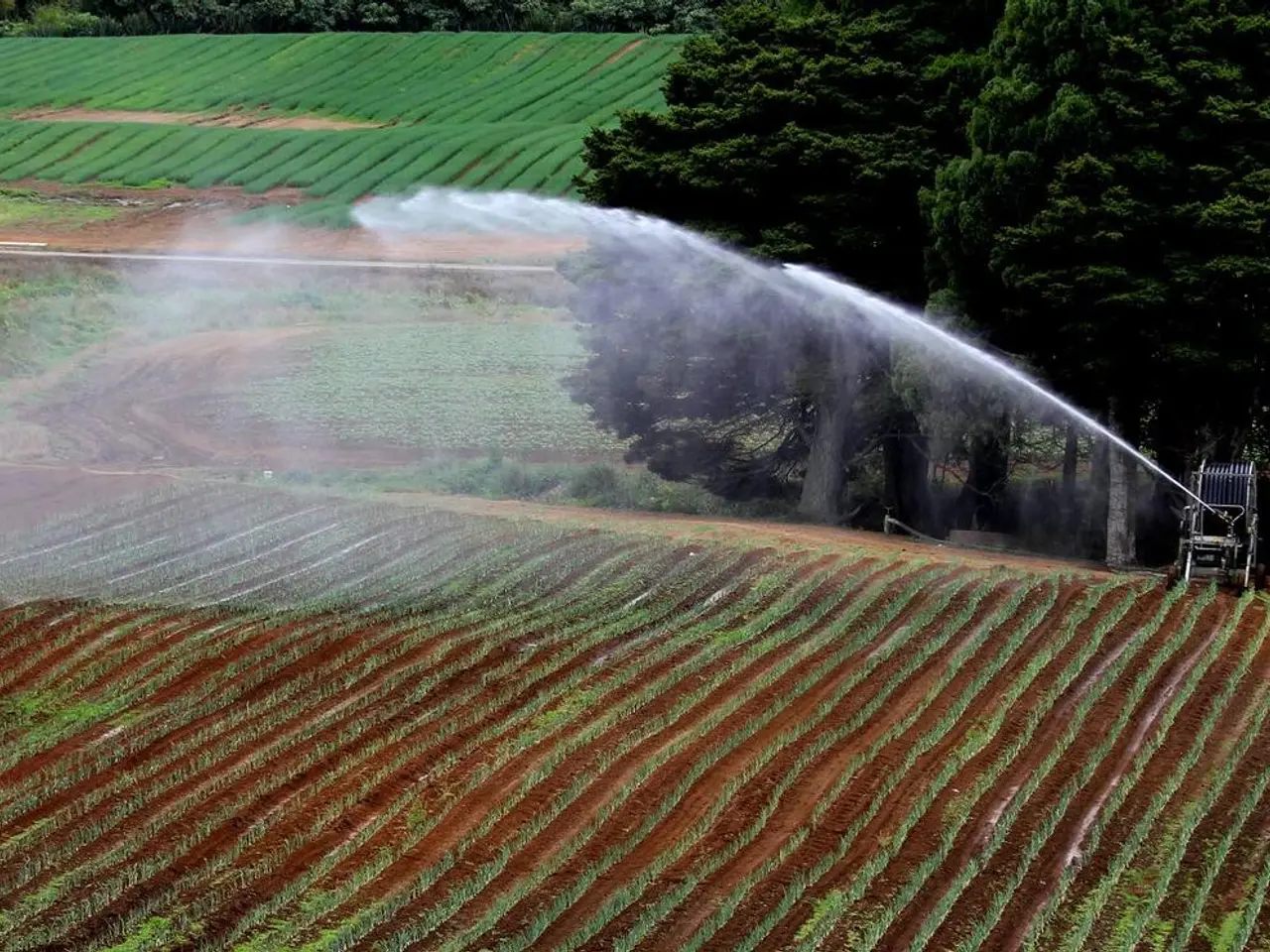Maintaining Irrigation Systems: Strategies to Avoid Failures
Maintaining your irrigation system is essential for preventing breakdowns, extending its lifespan, and improving efficiency. By following these steps, you can ensure your system continues to deliver water efficiently and effectively.
Regular Inspections
Inspecting your irrigation system regularly, ideally once or twice a year, is crucial. This check helps you detect leaks, damaged or misaligned sprinkler heads, wear and tear on valves, and clogged nozzles.
Cleaning Components
Regular cleaning of components, such as sprinkler heads, nozzles, filters, and valves, is vital to remove dirt, sediment, and mineral deposits that can block water flow and reduce efficiency.
Flushing the System
Periodically flushing the irrigation lines by running water through them helps clear out debris and sediment, preventing clogs and ensuring efficient water delivery. This is especially important if the system runs for extended hours or during off-seasons.
Maintaining Electrical Connections
Inspecting and maintaining electrical connections for controllers and solenoids is essential. Securing wiring and replacing any corroded wires ensures steady power and proper valve operations.
Adjusting Sprinkler Heads
Adjusting sprinkler heads to correct spray patterns and coverage improves watering efficiency and minimizes water waste.
Testing and Maintaining Valves
Individually testing and maintaining valves ensures they open and close properly. Replacing washers or seals showing wear prevents leaks and malfunction.
Monitoring and Regulating Water Pressure
Using pressure regulators or booster pumps helps keep system pressure within ideal operational ranges, avoiding damage from too high or low pressure.
Updating Controller Settings and Firmware
Seasonally updating controller settings and firmware to match watering schedules with plant needs and environmental conditions reduces water waste.
Using Waterproof Thread Seal Tape
Using waterproof thread seal tape on threaded connections during maintenance prevents leaks.
Keeping a Maintenance Log
Documenting inspections, repairs, and seasonal services such as winterization and spring startup helps track system health and warranty claims.
While some maintenance tasks, like cleaning sprinkler heads or flushing the system, can be done DIY with proper tools, more complex repairs such as valve replacement or intricate electronics maintenance may require professionals.
Regularly following these steps will help avoid costly repairs, conserve water, support soil health, and extend the life of your irrigation system while maintaining efficient water delivery. If you notice dry garden areas or unusual flooding, these are clear signs of a problem that requires immediate attention. A system built with high-quality components lasts longer and better withstands environmental stress. Irrigation system maintenance is crucial for preventing failures, extending the system's lifespan, and ensuring irrigation efficiency.
Keep a maintenance log to document inspections, repairs, and seasonal services for tracking system health and warranty claims.Managing electrical connections for controllers and solenoids by securing wiring and replacing corroded wires is necessary for steady power and proper valve operations.Monitoring and regulating water pressure using pressure regulators or booster pumps is essential for avoiding system damage from excessive pressure and ensuring efficient water delivery.



